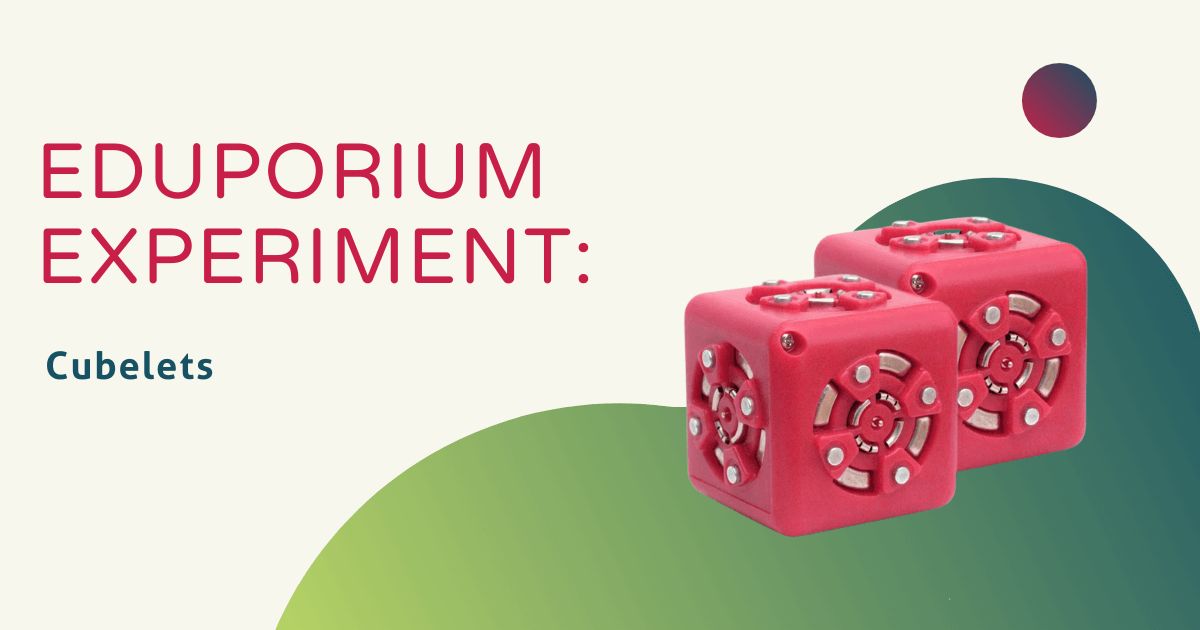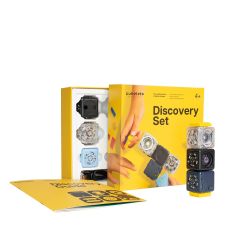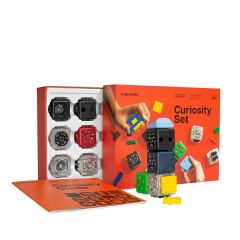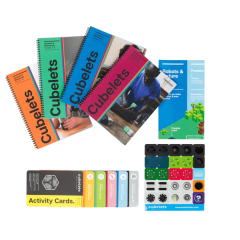If you are looking to introduce robotics at a young age, the Cubelets blocks provide a fantastic option for doing so. The three easy-to-use robot construction kits each come packaged with simple instructions along with some increasingly complex robot project ideas. I had the pleasure of experimenting with the Cubelets Six Kit, which includes six blocks (each with their own unique function), a USB charger (to charge the battery block) and two brick adaptors.
The Cubelets blocks are categorized into three groups: ‘Sense’ blocks, ‘Act’ blocks and ‘Think’ blocks. In the instructions, you will find the exact function of each block, such as battery, distance or flashlight to name a few. The blocks are connectable thanks to the powerful magnets found on every side.
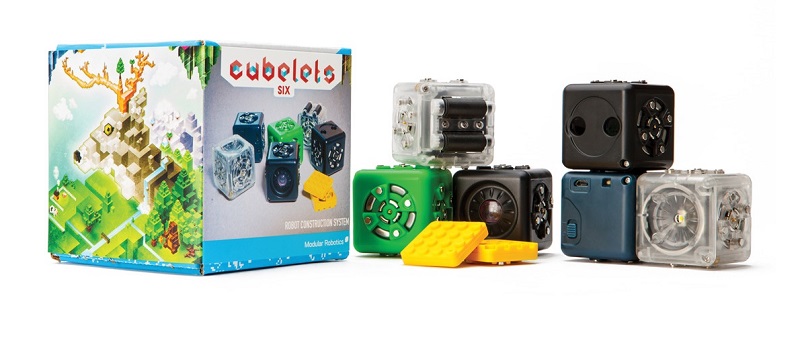
I found the blocks to be extremely durable, simple to operate and easy to break down to build again! What I found particularly exciting was the inclusion of the two brick adaptors, which allows kids the opportunity to connect their LEGOs to their robots and construct even cooler creations. LEGOs are still very popular and the idea that kids can now make their LEGO creations move or light up is very appealing—not to mention beneficial for their development. Unfortunately, I did not have any LEGOs during my experimentation with Cubelets, but I was still able to create some really cool robots!

First, I made the Dud Light. This involved stacking the Battery block, Brightness block and the Flashlight block. With just a flick of the switch on the Battery block, my Dud Light turned on and it became immediately clear that kids could easily add other blocks to expand the capabilities of their robot! Next, I built the Fraidy bot. It was easy to disassemble my first robot to start building something new.
This robot was powered by the Battery block like the first one, but it had the capacity to move because of the wheels on the Drive block and it reacted to movement rather than light because of the Distance sensor. I also added the Passive block (the green one) to stabilize my robot so it would move more smoothly. I had fun “scaring” my Fraidy Bot, as it reacted quickly to my hand movement when in front of the sensor and ran away.
Ultimately, I determined that this truly is an exciting hands-on way to foster original design thinking in kids as young as six or seven. With Cubelets, robot construction is possible and enhanced for early learners (and late learners like me!), as they are able to create interactive robots out of magnetic and modular cubes.
If you have any ideas or suggestions for products you'd like to see featured on the Eduporium Experiment, comment below or send us a message on Twitter or Facebook!



